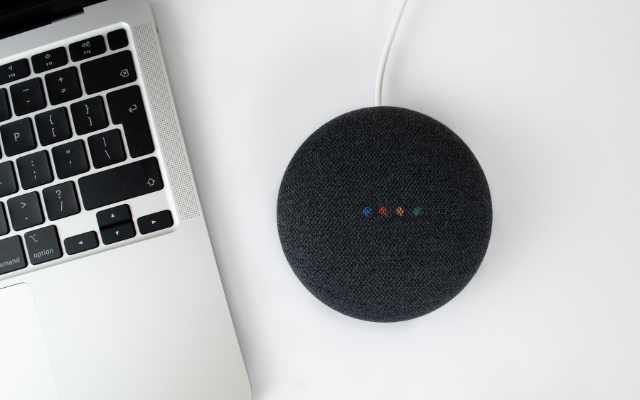Hack raises security questions over Google smart speakers

Google smart speakers, such as the Google Home and Nest devices, have been a popular choice for consumers looking to make their homes more connected and convenient. However, a recent hack has raised serious security concerns about these devices and their ability to protect user data.
In this article, we will explore the details of the hack, the potential implications for users, and what steps can be taken to protect against similar attacks.
What happened?
In October 2019, a security researcher discovered a vulnerability in the Google Nest Cam IQ, a security camera that can be controlled by voice through Google Home or Nest devices. By exploiting the vulnerability, the researcher was able to gain access to the camera’s video feed and control the camera’s movement, without any authentication or authorization required.
Google quickly issued a patch to fix the vulnerability, but the incident raised questions about the security of Google’s smart home devices and their ability to protect user privacy.
Why is this concerning?
The hack of the Google Nest Cam IQ highlights a broader issue with smart home devices: their potential vulnerability to hacking and unauthorized access. These devices are often connected to the internet, which means that they can be targeted by hackers looking to exploit vulnerabilities and gain access to sensitive data.
In the case of the Google Nest Cam IQ, the ability to control the camera’s movement and access its video feed could allow an attacker to spy on a user’s home or even use the camera to gather information about the user’s habits and routines.
What is Google doing to improve security?
Following the hack of the Nest Cam IQ, Google has taken several steps to improve the security of its smart home devices. These include:
- Issuing software updates to fix vulnerabilities: Google has continued to release software updates for its smart home devices, which often include security fixes.
- Adding new security features: Google has added new security features to its smart home devices, such as two-factor authentication and the ability to disable voice control.
- Enhancing privacy controls: Google has made it easier for users to control their privacy settings on its smart home devices, including the ability to delete voice recordings.
Despite these efforts, however, there is no guarantee that Google’s smart home devices are completely secure. As with any internet-connected device, there is always a risk of hacking and unauthorized access.
What happened in the Google smart speaker hack?
The hack involved a security researcher who found a vulnerability in the Google Home smart speaker. The researcher discovered that by using a technique called “DNS rebinding,” an attacker could trick the Google Home device into connecting to a malicious website controlled by the attacker. This would allow the attacker to execute commands on the device and potentially access sensitive information, such as a user’s Google account credentials.
The vulnerability was reported to Google, who quickly released a patch to fix the issue. However, the incident raised concerns over the security of smart speakers and the potential for them to be used as a tool for cyberattacks.
What is DNS rebinding?
DNS rebinding is a technique used by attackers to bypass the same-origin policy in web browsers. The same-origin policy is a security feature implemented by web browsers that prevents a website from accessing or modifying data from another website. DNS rebinding involves an attacker setting up a malicious website and then changing the DNS record for that website to point to the IP address of the target device, in this case, a Google Home smart speaker. The attacker can then use JavaScript to send commands to the device and potentially access sensitive information.
What are the security risks of smart speakers?
Smart speakers are always listening for the “wake word” that activates the device, which means they are constantly monitoring the sounds in the environment. This raises concerns over the potential for these devices to be used for eavesdropping and invasion of privacy. There have been instances where smart speakers have recorded private conversations without the user’s knowledge or consent.
In addition to the risk of unauthorized access to the device, there is also the potential for these devices to be used as a gateway for other cyberattacks. For example, an attacker could use a compromised smart speaker to gain access to a user’s Wi-Fi network and then launch further attacks against other devices on the network.
What steps can users take to protect their smart speakers?
There are several steps users can take to protect their smart speakers from potential security risks. Here are a few suggestions:
- Keep your software up to date: Make sure your smart speaker’s software is always up to date to ensure any known vulnerabilities have been patched.
- Disable features you don’t need: If you don’t use certain features, such as voice recognition or personal assistant capabilities, consider disabling them to minimize potential security risks.
- Change your wake word: Some smart speakers allow users to change the wake word. Consider choosing a less common word to minimize the risk of accidental activation.
- Use strong passwords: Use a strong, unique password for your smart speaker account to prevent unauthorized access.
- Be mindful of what you say: Be aware that your smart speaker is always listening, so be mindful of what you say around it. Avoid sharing sensitive information or passwords within earshot of the device.
- Monitor your device activity: Check your device’s activity logs regularly to ensure there is no suspicious activity.
FAQs
Are smart speakers secure?
Smart speakers are vulnerable to security risks and can be used for cyberattacks. However, taking certain precautions can help mitigate these risks.
Can smart speakers be hacked?
Yes, smart speakers can be hacked, as demonstrated in the Google Home vulnerability discovered in 2019.
What is CastHack?
CastHack is a vulnerability that affects Google Home and Google Nest devices. The vulnerability was discovered by researchers at Security Research Labs, who found that it is possible to gain access to a smart speaker’s microphone by sending it a specially crafted message. Once the attacker has gained access to the microphone, they can listen in on conversations that are taking place in the room.
The vulnerability is caused by a flaw in the way that Google Home and Google Nest devices handle incoming messages. When a message is received, the device checks to see if it is a valid message. However, the device does not check to see if the message is actually intended for that particular device. This means that an attacker can send a message that is intended for a different device, and the target device will still process it.
How can CastHack be exploited?
In order to exploit the CastHack vulnerability, an attacker must be on the same Wi-Fi network as the smart speaker that they want to target. This means that an attacker must either be physically present in the same location as the target device, or have gained access to the same Wi-Fi network through other means.
Once the attacker is on the same network as the target device, they can send a specially crafted message to the device. The message is designed to exploit the vulnerability in the device’s message handling system, and gain access to the device’s microphone.
What data can be accessed using CastHack?
Once the attacker has gained access to the smart speaker’s microphone, they can potentially listen in on conversations that are taking place in the room. This could allow the attacker to access sensitive information, such as credit card details, passwords, or other personal information.
What has Google done to address the vulnerability?
Google has released a patch that addresses the CastHack vulnerability. The patch was released in April 2019, shortly after the vulnerability was discovered. However, it is important to note that not all users may have received the patch. Users are advised to check that their device’s firmware is up to date, and to enable automatic updates to ensure that any future security patches are installed promptly.
Can all smart home devices be hacked?
No, not all smart home devices are equally vulnerable to hacking. However, any device that is connected to the internet is potentially vulnerable to attacks, so it’s important to take steps to protect yourself.
What are the wider security implications of smart speakers?
The discovery of the CastHack vulnerability has raised questions about the security of smart speakers and the data that they collect. Smart speakers are designed to collect data on user preferences and behaviour, in order to provide a personalised user experience. However, the data that they collect can also be used for targeted advertising, or potentially accessed by hackers.
As smart speakers become increasingly popular, it is important for users to be aware of the potential security risks, and to take steps to protect their devices and their personal information. Users are advised to keep their device’s firmware up to date and to use strong and unique passwords to prevent unauthorized access. They should also ensure that their devices are only connected to secure and trusted Wi-Fi networks, and to regularly review and delete their voice recordings and usage history.
In addition to these precautions, it is important for manufacturers to prioritize security in the design and development of smart speakers. This includes implementing strong encryption protocols to protect user data, as well as regularly conducting security audits and vulnerability assessments to identify and address potential security weaknesses.
The security of smart speakers is not only important for protecting user privacy, but also for preventing cyber attacks that could have wider implications. For example, a compromised smart speaker could be used as a gateway for hackers to access other devices on the same network, including computers and other smart home devices.
As the use of smart speakers continues to grow, it is crucial for both manufacturers and users to prioritize security and take steps to protect against potential threats. By working together to address these concerns, we can ensure that the benefits of smart speaker technology are enjoyed in a safe and secure manner.
Q: Can I completely disable the microphone on my smart speaker to prevent eavesdropping?
A: Most smart speakers do not have a physical switch to disable the microphone, but some models do offer a “mute” feature that can temporarily disable the microphone. However, keep in mind that this may not completely prevent eavesdropping as there have been reports of malware being able to bypass the mute feature.
Q: What should I do if I suspect my smart speaker has been hacked?
A: If you suspect your smart speaker has been hacked, the first thing to do is disconnect it from your Wi-Fi network. You should then contact the manufacturer for further assistance and consider changing your passwords and monitoring your accounts for suspicious activity.
Q: Can I use a smart speaker without connecting it to the internet?
A: Smart speakers are designed to be used with an internet connection, as they require access to the cloud for many of their features. However, some models may have limited functionality when used offline.
Q: Are there any regulations in place to ensure the security of smart speakers?
A: Currently, there are no specific regulations in place for the security of smart speakers. However, some countries have general data protection regulations that may apply to the use of these devices.
- How to Choose and Set Up the Best Home Security Camera System
- Hidden security camera: regulations, tips and more
- What is software security and why is it so important now?
Conclusion
The Google Home vulnerability discovered in 2019 highlighted the potential security risks of smart speakers and the need for better security measures to be put in place. While smart speakers can be convenient and useful devices, users should be aware of the potential risks and take steps to protect themselves. By keeping software up to date, disabling unnecessary features, using strong passwords, and monitoring device activity, users can minimize the risk of their smart speakers being used for cyberattacks or unauthorized access to sensitive information.







